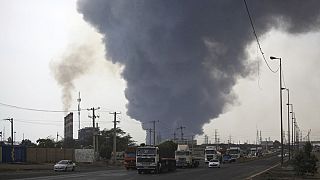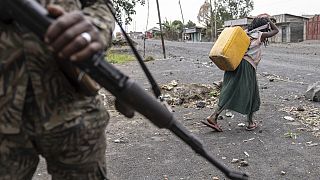Democratic Republic Of Congo
The population of the world’s largest gorilla sub-species prominent in Central Africa has fallen by 77 percent over the past two decades, a new report says.
This reduction has been linked to illegal mining for coltan, a key mineral used in the production of cell phones and electronics.
The report from the Wildlife Conservation Society and Fauna & Flora International found out that its numbers had fallen to 3,800 from an estimated 17,000 in 1995.
War threatens world's largest gorilla: A war in the Democratic Republic of Congo in central Africa threatens t… https://t.co/fCI0Yg2IlJ
— Mark (@markrescuedogs) April 6, 2016
Estimates of the animal’s numbers were based on widespread field surveys of ground nests and other signs as well as data collected from rangers and local communities.
“For these surveys, we are aiming to cover a larger area than what has been covered for previous surveys. How we do this? We are just counting different nests for gorillas,” Deo Kujirakwinja, a wildlife conservation society researcher said.
Experts have recommended that the grauer gorillas should now be labeled as “critically endangered”, the highest risk category assigned by the International Union for Conservation of Nature, which means a wild animal faces a very high risk of extinction.
The report has proposed the disarming of militia groups operating in the lawless region.
Electronic companies have been called upon to ensure that source minerals from this region are purchased from mining sites that do not hunt bush meat and are conflict free.
Reuters











Go to video
Boat catches fire in Congo killing at least 50 people
Go to video
U.N reports thousands of children raped in Eastern Congo
Go to video
Africa’s trade winds shift amid tariffs, reforms, and regional tensions {Business Africa}
Go to video
A booming market, but lacking data: Africa's challenge [Business Africa]
01:13
Yuna the lioness finds safety in the UK after escaping war-torn Ukraine
02:12
Crucial peace talks in Luanda set to shape Eastern Congo’s future